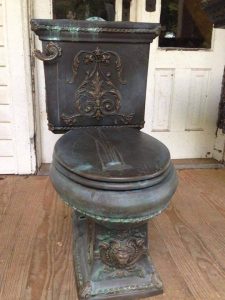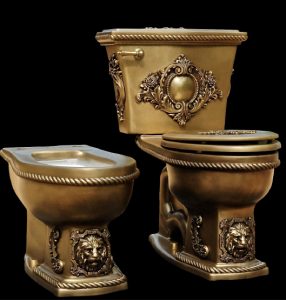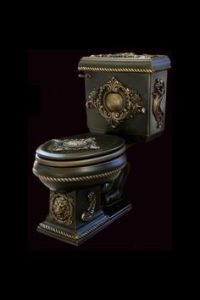

In the context of Victorian architecture and design, the term “Victorian toilet” could refer to a toilet fixture or bathroom design characteristic of the Victorian era, which spanned from the mid-19th to the early 20th century. During the Victorian period, there were distinctive styles and features associated with interior design, including bathrooms and toilets. Here are some aspects that might be associated with a Victorian toilet:
High Tank Toilets: Victorian toilets often featured high tank toilets, where the water tank was mounted high on the wall with a chain or pull cord to flush the toilet. This design was both functional and aesthetically in line with the elaborate and ornate Victorian style.
Ornate Design: Victorian design was known for its ornate and decorative elements. Victorian toilets might have featured intricate detailing on porcelain fixtures, such as floral patterns or elaborate motifs.
Pedestal Sinks: Pedestal sinks, characterized by a basin supported by a tall, slender column, were common in Victorian bathrooms. These sinks often had intricate detailing and were made of materials like porcelain or marble.
Patterned Tiles: Victorian bathrooms frequently had patterned tiles, often with geometric or floral designs. These tiles could be used on the floor, walls, or as wainscoting.
Pull Chain Flusher: Toilets during the Victorian era commonly had pull chain flushers. The water tank would be suspended high above the toilet, and a pull chain would release water into the bowl for flushing.
Dark Wood and Brass Accents: Victorian interiors often incorporated dark wood and brass accents. This could be seen in the toilet seat, handles, or other bathroom accessories.
It’s important to note that the specifics of a Victorian toilet could vary depending on the economic status of the household. Wealthier families might have had more elaborate and expensive fixtures, while simpler designs would be found in less affluent homes.



